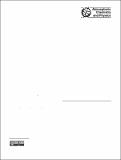Por favor, use este identificador para citar o enlazar a este item:
http://hdl.handle.net/10261/217582COMPARTIR / EXPORTAR:
 SHARE SHARE
 CORE
BASE CORE
BASE
|
|
| Visualizar otros formatos: MARC | Dublin Core | RDF | ORE | MODS | METS | DIDL | DATACITE | |

| Campo DC | Valor | Lengua/Idioma |
|---|---|---|
| dc.contributor.author | Richard, A. | - |
| dc.contributor.author | Gianini, M.F.D. | - |
| dc.contributor.author | Mohr, C. | - |
| dc.contributor.author | Furger, M. | - |
| dc.contributor.author | Bukowiecki, N. | - |
| dc.contributor.author | Minguillón, María Cruz | - |
| dc.contributor.author | Lienemann, P. | - |
| dc.contributor.author | Flechsig, U. | - |
| dc.contributor.author | Appel, K. | - |
| dc.contributor.author | DeCarlo, P.F. | - |
| dc.contributor.author | Heringa, M.F. | - |
| dc.contributor.author | Chirico, R. | - |
| dc.contributor.author | Baltensperger, U. | - |
| dc.contributor.author | Prévôt, André S.H. | - |
| dc.date.accessioned | 2020-08-07T09:00:09Z | - |
| dc.date.available | 2020-08-07T09:00:09Z | - |
| dc.date.issued | 2011 | - |
| dc.identifier | doi: 10.5194/acp-11-8945-2011 | - |
| dc.identifier | issn: 1680-7316 | - |
| dc.identifier.citation | Atmospheric Chemistry and Physics 11: 8945- 8963 (2011) | - |
| dc.identifier.uri | http://hdl.handle.net/10261/217582 | - |
| dc.description.abstract | Time and size resolved data of trace elements were obtained from measurements with a rotating drum impactor (RDI) and subsequent X-ray fluorescence spectrometry. Trace elements can act as indicators for the identification of sources of particulate matter <10 μm (PM10) in ambient air. Receptor modeling was performed with positive matrix factorization (PMF) for trace element data from an urban background site in Zürich, Switzerland. Eight different sources were identified for the three examined size ranges (PM1-0.1, PM2.5-1 and PM 10-2.5): secondary sulfate, wood combustion, fire works, road traffic, mineral dust, de-icing salt, industrial and local anthropogenic activities. The major component was secondary sulfate for the smallest size range; the road traffic factor was found in all three size ranges. This trace element analysis is complemented with data from an Aerodyne high-resolution time-of-flight aerosol mass spectrometer (AMS), assessing the PM1 fraction of organic aerosols. A separate PMF analysis revealed three factors related to three of the sources found with the RDI: oxygenated organic aerosol (OOA, related to inorganic secondary sulfate), hydrocarbon-like organic aerosol (HOA, related to road traffic) and biomass burning organic aerosol (BBOA), explaining 60 %, 22 % and 17 % of total measured organics, respectively. Since different compounds are used for the source classification, a higher percentage of the ambient PM10 mass concentration can be apportioned to sources by the combination of both methods. © 2011 Author(s). | - |
| dc.language | eng | - |
| dc.publisher | European Geophysical Society | - |
| dc.relation.isversionof | Publisher's version | - |
| dc.rights | openAccess | - |
| dc.title | Source apportionment of size and time resolved trace elements and organic aerosols from an urban courtyard site in Switzerland | - |
| dc.type | artículo | - |
| dc.identifier.doi | 10.5194/acp-11-8945-2011 | - |
| dc.relation.publisherversion | http://dx.doi.org/10.5194/acp-11-8945-2011 | - |
| dc.date.updated | 2020-08-07T09:00:10Z | - |
| dc.relation.csic | Sí | - |
| dc.type.coar | http://purl.org/coar/resource_type/c_6501 | es_ES |
| item.fulltext | With Fulltext | - |
| item.grantfulltext | open | - |
| item.cerifentitytype | Publications | - |
| item.openairetype | artículo | - |
| item.openairecristype | http://purl.org/coar/resource_type/c_18cf | - |
| Aparece en las colecciones: | (IDAEA) Artículos | |
Ficheros en este ítem:
| Fichero | Descripción | Tamaño | Formato | |
|---|---|---|---|---|
| acp-11-8945-2011.pdf | 5,74 MB | Adobe PDF |  Visualizar/Abrir |
CORE Recommender
SCOPUSTM
Citations
88
checked on 24-abr-2024
WEB OF SCIENCETM
Citations
80
checked on 23-feb-2024
Page view(s)
101
checked on 23-abr-2024
Download(s)
30
checked on 23-abr-2024
Google ScholarTM
Check
Altmetric
Altmetric
NOTA: Los ítems de Digital.CSIC están protegidos por copyright, con todos los derechos reservados, a menos que se indique lo contrario.
